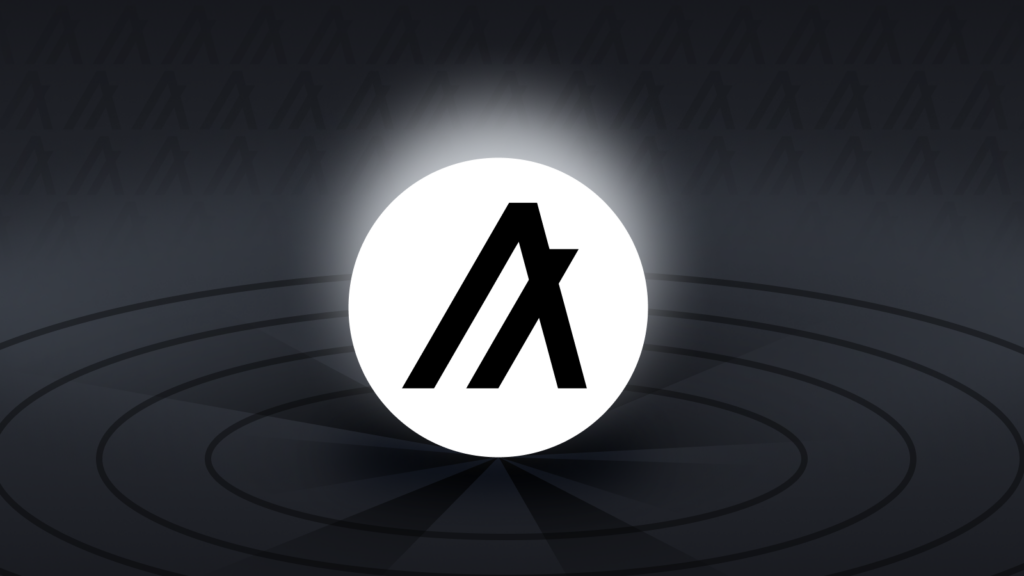Trading in the Algorand ecosystem has attracted a growing community of developers and investors looking for efficient ways to manage their assets. One effective solution many turn to is the use of trading bots. These automated programs are designed and developed to execute trades on behalf of users, optimizing transactions and improving profitability. Specifically tailored for the Algorand blockchain, ALGO trading bots provide unique advantages due to the platform’s speed and low transaction costs.
Historically, algorithmic trading systems have been widely used in traditional finance to improve trading efficiency. Similarly, Algorand trading bots offer a strategic advantage in managing ALGO assets, enabling users to make profits on market fluctuations without the need for constant manual input. By leveraging these bots, users can automate tasks, execute multiple strategies, and react instantly to market changes, resulting in a more streamlined and profitable trading experience.
Argoox will delve into the intricacies of Algorand (ALGO) trading bots, from understanding their role in the market to exploring how they work, their benefits, and the technical aspects of building one. We’ll also highlight best practices and key features to consider when developing a bot, ensuring you are well-equipped to make informed decisions.
What is the Role of Algorand (ALGO) Trading Bot?
An Algorand trading bot is an automated software that interacts with exchanges and executes buy or sell orders based on pre-set algorithms or strategies. Its primary role is to streamline trading activities by removing the emotional bias that often affects manual trading. Algorand bots offer speed, precision, and the ability to monitor markets 24/7, ensuring that opportunities aren’t missed when traders are unavailable.
Additionally, these bots play a crucial role in executing complex trading strategies that involve quick decision-making, such as arbitrage, market-making, or scalping. With Algorand’s high throughput and low transaction costs, these bots can efficiently manage large volumes of trades, providing traders with an edge in volatile markets.
How Do Algorand (ALGO) Trading Bots Work?
Algorand trading bots function by connecting to cryptocurrency exchanges via APIs (Application Programming Interfaces) and executing trades based on predefined rules. These rules are typically set by the user and can vary from simple to complex algorithms. The bot continuously monitors market data, such as price fluctuations, trading volumes, and other key indicators, to make decisions that align with the user’s trading strategy.
Here’s a basic overview of how these bots operate:
- Data Collection: Bots collect real-time data from exchanges, including price, order book depth, and market trends.
- Signal Generation: According to the collected data, the bot generates trading signals according to the strategies programmed.
- Execution: The bot places buy or sell orders as per the trading signals generated, often faster and more accurately than human traders.
- Monitoring: Post-trade, the bot continues to monitor the position and make adjustments, if needed, based on evolving market conditions.
Benefits of Using Algorand (ALGO) Trading Bots
There are several benefits to using Algorand trading bots:
- 24/7 Trading: Bots can operate around the clock (day and night), allowing traders to take advantage of opportunities in the market at all hours without needing constant supervision.
- Speed and Precision: Trading bots react instantaneously to market movements, making trades faster than a human could, which is crucial in volatile markets.
- Emotion-Free Trading: Trading can be influenced by human emotions, leading to errors. Bots eliminate this risk by sticking to their pre-programmed strategy.
- Customizable Strategies: Bots can be programmed to follow specific trading strategies tailored to a trader’s goals, from arbitrage to grid trading.
- Efficient Risk Management: Bots can include automatic stop-loss and take-profit features, minimizing potential losses and locking in profits at predefined levels.
- Low Transaction Costs: Given Algorand’s cost-effective infrastructure, bots can execute trades without excessive fees.
What are Best Practices for Running Algorand (ALGO) Trading Bots?
To effectively run an Algorand trading bot, here are some best practices to follow:
- Set Clear Objectives: Define what you want the bot to achieve, whether it’s maximizing profits, minimizing risks, or exploiting market inefficiencies.
- Backtesting Strategies: Before deploying your bot on live exchanges, run it in a backtesting environment using historical data to evaluate how well it performs.
- Monitor Performance: Even though bots are automated, it’s crucial to monitor their performance regularly. Make adjustments if necessary to optimize results.
- Diversify Strategies: Never just have a single strategy. Diversify your bot’s approaches, such as using grid trading alongside trend-following strategies.
- Ensure Security: Use secure APIs and exchange credentials to avoid potential breaches. Implement two-factor authentication where possible.
What are Key Features to Consider in Making Algorand (ALGO) Trading Bot?
When building or selecting an Algorand trading bot, consider the following key features:
- Customization: The bot should allow for the customization of strategies to fit specific trading goals.
- Risk Management Tools: Look for stop-loss, take-profit, and risk allocation features to manage exposure effectively.
- Real-time Data Access: Ensure the bot can access and process market data instantly to avoid any delays in decision-making.
- User-Friendly Interface: A clean, intuitive interface makes it easier to set up and monitor the bot’s performance.
- Security Features: Look for encryption and secure API connection features to safeguard your trading accounts and assets.
- Backtesting Capability: The ability to test the bot’s performance on historical data can help assess its effectiveness before live trading.
How to Make Algorand (ALGO) Trading Bot with Code?
To make an Algorand (ALGO) trading bot with a single code section, you can follow a simple algorithmic trading strategy using Python and the CCXT library (which supports various cryptocurrency exchanges). Below is an example of how you can code a basic trading bot to execute buy and sell orders based on a simple moving average (SMA) crossover strategy.
Requirements:
Python is installed on your system.
The CCXT library for exchange integration. You can install it via pip:
pip install ccxtAlgorand-compatible exchange API key and secret.
Example Code:
import ccxt
import time
import pandas as pd
# Connect to the exchange
exchange = ccxt.binance({
'apiKey': 'YOUR_API_KEY',
'secret': 'YOUR_API_SECRET',
})
# Parameters
symbol = 'ALGO/USDT' # Trading pair
timeframe = '1h' # Candlestick timeframe
ma_short = 9 # Short-term moving average
ma_long = 21 # Long-term moving average
order_size = 10 # Number of ALGO to trade
def get_ma(data, length):
return data['close'].rolling(window=length).mean()
def fetch_ohlcv():
bars = exchange.fetch_ohlcv(symbol, timeframe)
df = pd.DataFrame(bars, columns=['timestamp', 'open', 'high', 'low', 'close', 'volume'])
df['timestamp'] = pd.to_datetime(df['timestamp'], unit='ms')
return df
def trading_signal(df):
df['ma_short'] = get_ma(df, ma_short)
df['ma_long'] = get_ma(df, ma_long)
if df['ma_short'].iloc[-1] > df['ma_long'].iloc[-1] and df['ma_short'].iloc[-2] <= df['ma_long'].iloc[-2]:
return 'buy'
elif df['ma_short'].iloc[-1] < df['ma_long'].iloc[-1] and df['ma_short'].iloc[-2] >= df['ma_long'].iloc[-2]:
return 'sell'
else:
return 'hold'
def place_order(signal):
if signal == 'buy':
order = exchange.create_market_buy_order(symbol, order_size)
print(f"Placed BUY order: {order}")
elif signal == 'sell':
order = exchange.create_market_sell_order(symbol, order_size)
print(f"Placed SELL order: {order}")
else:
print("No trade signal")
while True:
try:
# Fetch the latest market data
df = fetch_ohlcv()
# Determine trading signal
signal = trading_signal(df)
# Place the order
place_order(signal)
# Sleep before next check (e.g., 1 hour)
time.sleep(3600)
except Exception as e:
print(f"An error occurred: {str(e)}")Explanation:
- Connect to the Exchange: The bot connects to the Binance exchange utilizing the CCXT library, which handles multiple exchanges and APIs.
- Simple Moving Average (SMA): The bot uses a simple SMA crossover strategy. When the short-term SMA crosses above the long-term SMA, it buys ALGO, and when the short-term SMA crosses below the long-term SMA, it sells ALGO.
- Order Execution: The bot places market orders based on the trading signal, either buying or selling ALGO.
- Looping: The bot continuously runs and checks the market every hour (based on the chosen timeframe).
Steps:
- Install CCXT via pip.
- Get API keys from the exchange (such as Binance, Coinbase, etc.).
- Run the script to continuously monitor the market and execute trades.
This is a basic bot using SMA as a strategy. You can further customize it with stop-loss, take-profit, or different indicators.
Tools, Libraries, and Technologies Used
Developing Algorand trading bots requires several tools and libraries:
- CCXT Library: This is a popular library for connecting to multiple cryptocurrency exchanges via their APIs.
- Algorand SDK: Use this to interact directly with the Algorand blockchain for tasks like fetching balances or sending transactions.
- Backtrader: A Python-based library for backtesting trading strategies.
- NumPy and Pandas: Essential for processing and analyzing large datasets related to market conditions.
- Flask/Django: If you want to build a web-based interface for your bot.
What are Different Types of Algorand (ALGO) Trading Bots?
There are several types of trading bots for Algorand:
- Arbitrage Bots: Exploit price differences between exchanges to profit.
- Market-Making Bots: Provide liquidity by setting orders (buy and sell) positions on both market sides.
- Trend-Following Bots: Trade based on identified market trends.
- Grid Trading Bots: By setting buy and sell orders regularly to profit from market fluctuations.
- Scalping Bots: Make frequent trades with small profit margins.
Challenges in Building Algorand (ALGO) Trading Bots
Building a trading bot comes with its challenges:
- Algorithm Complexity: Developing algorithms that can adapt to changing market conditions requires a deep understanding of both trading and coding.
- Market Volatility: Sudden price swings can result in unexpected losses, especially for bots that rely on past data for predictions.
- Security Concerns: Bots connected to exchanges must be securely designed to prevent API key breaches or hacking attempts.
- Data Accuracy: Real-time data processing is crucial, and any delays or inaccuracies can lead to poor trade execution.
Are Algorand (ALGO) Trading Bots Safe to Use?
Algorand trading bots are generally safe as long as they’re developed and used correctly. However, users should:
- Ensure the bot uses encrypted API connections to protect against unauthorized access.
- Regularly update the bot to patch any potential vulnerabilities.
- Only use bots on trusted exchanges with robust security measures.
Is it Possible to Make a Profitable Trading Bot?
Yes, it is possible to create a profitable Algorand trading bot. However, profitability depends on:
- The bot’s ability to accurately predict market movements.
- The effectiveness of the strategies programmed.
- Market conditions can greatly impact returns.
A well-constructed bot that utilizes efficient strategies, risk management, and consistent monitoring can deliver profits over time.
Conclusion
Algorand trading bots offer a strategic advantage for automating and optimizing trading activities. Users can accumulate a competitive edge in the market by leveraging the Algorand blockchain’s unique features, such as low transaction costs and fast confirmation times. Whether you are a novice or an experienced trader, implementing a bot can streamline your trading operations, reduce human error, and provide access to round-the-clock trading opportunities.
To start building your own Algorand trading bot, explore the available tools and libraries, implement best practices, and ensure you remain vigilant about security. Algorand’s AI-powered bots, like those available on Argoox, can provide additional efficiency and accuracy, enabling traders to navigate the complexities of the market with ease. Visit Argoox today to explore these cutting-edge solutions and enhance your trading potential.




